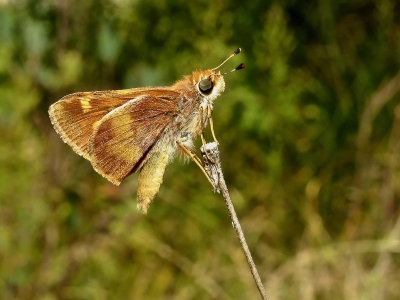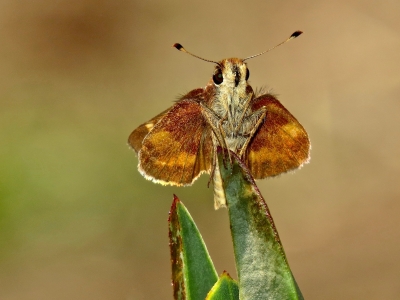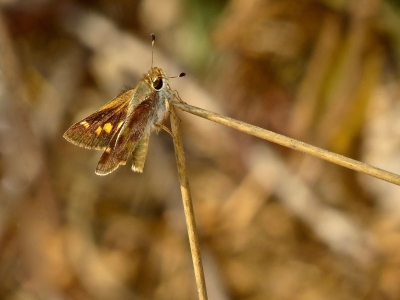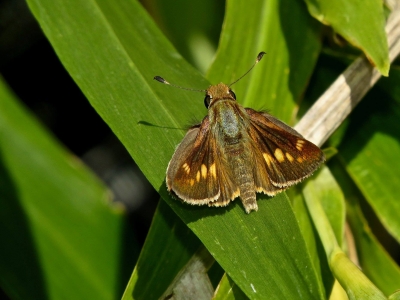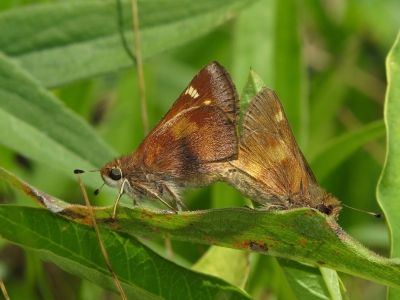Umber Skipper (Lon melane) is a small butterfly, with a wingspan of 1.25 to 1.375 inches. In our local area, it can be seen from March into the first week of December. There is a peak in May and then another one in September-October. Host plants are various grasses including Bermuda Grass (Cynodon dactylon) and California Brome (Bromus carinatus), and sedges including San Diego Sedge (Carex spissa). It is a common species in urban areas, thanks to the ubiquity of the Great American Lawn.
When Umber Skipper numbers peak in the fall, it is common to see courting pairs. In courtship, the female sits vibrating her wings (that’s her way of signaling interest) while the male flies little figures around her. After a while, the male will sit and rest. Every time the male withdraws, the female stops vibrating her wings. Then either she starts vibrating her wings and he returns instantly, or he comes back and she resumes vibrating instantly. This goes on for a very long time!
This is the fourth of five grass skippers on the Garden’s species list. They all use grasses of some kind as host plants, and also share a similar orange-brown coloration. Another common characteristic of grass skippers is how the forewing and hindwing are laid out one above the other rather than side-by-side, like all other butterflies. When they spread their wings, the hindwing is fully open and parallel to the ground, with the forewing at a 45-degree angle to the hindwing. In many parts of the US, it can be challenging to identify grass skippers to species level, especially if the specimen is a little worn. For a perfect example of how difficult it can be, compare the upper sides of male and female Fiery Skipper with those of Field Skipper.
It is found primarily in California, west of the Sierra Nevada divide, but is also seen in southern Arizona, Baja California, and the highlands of Mexico and Central America.

